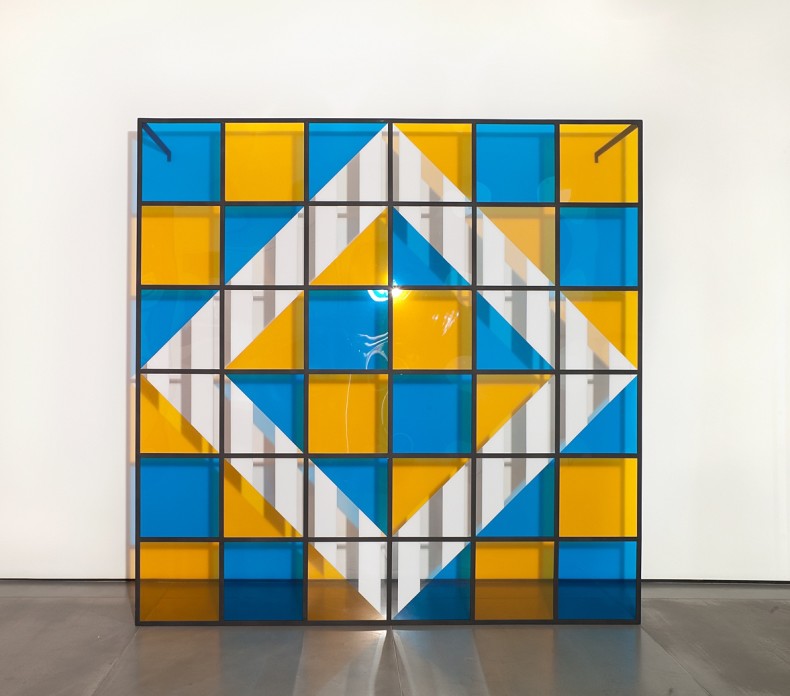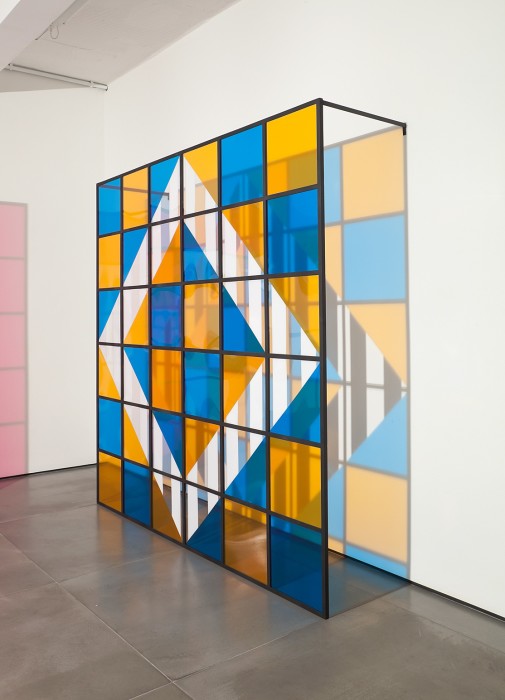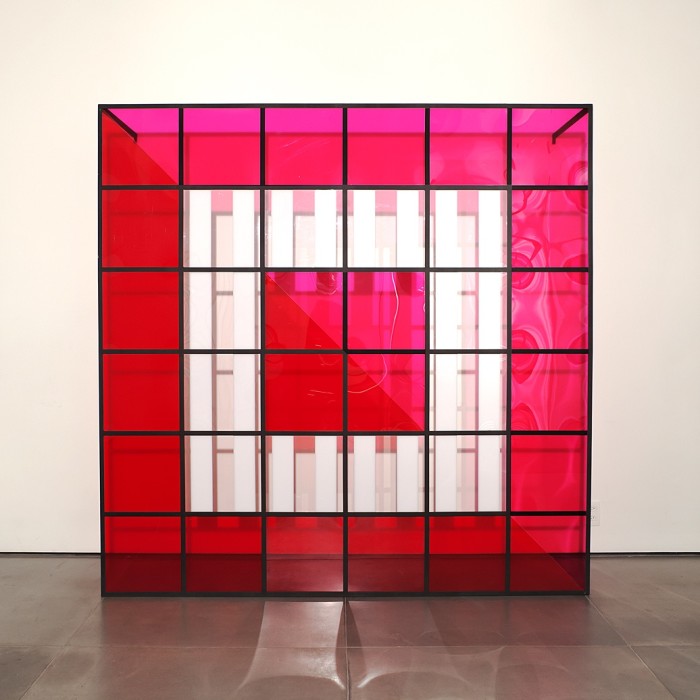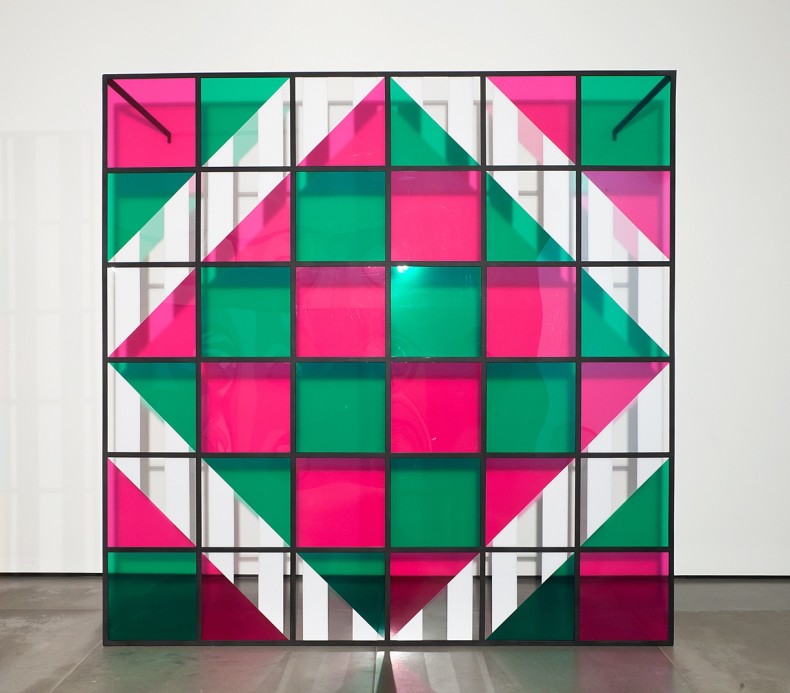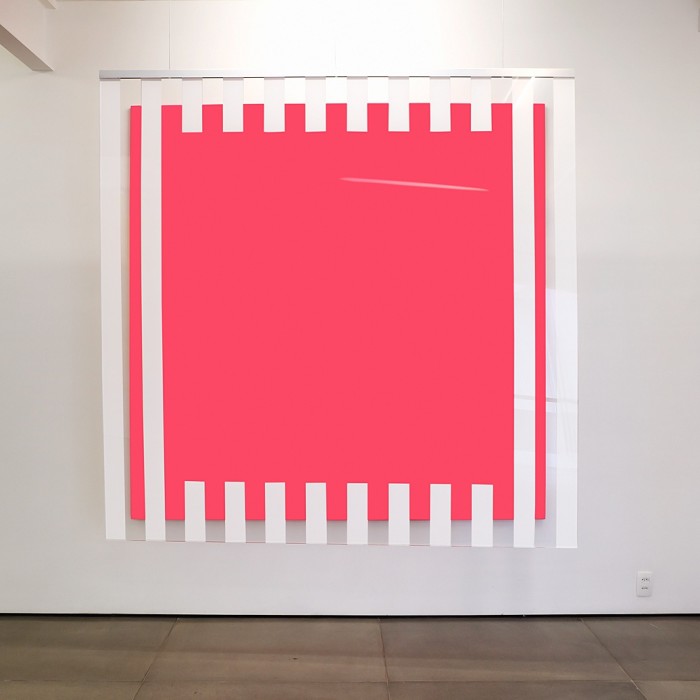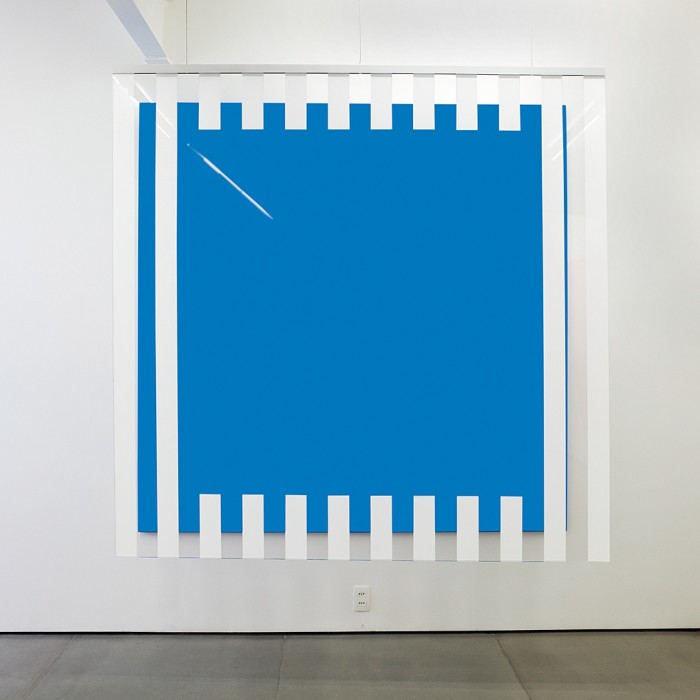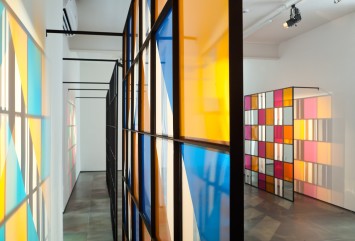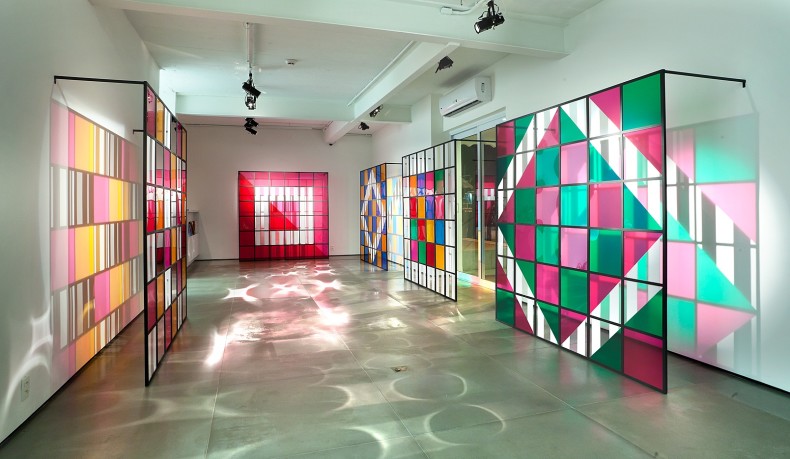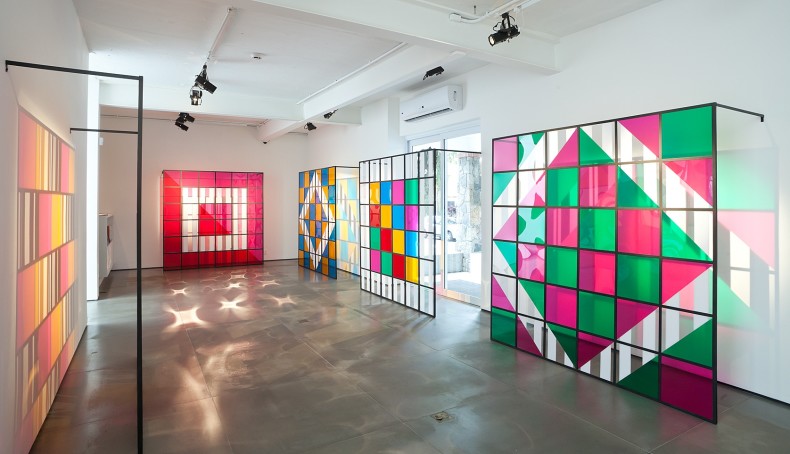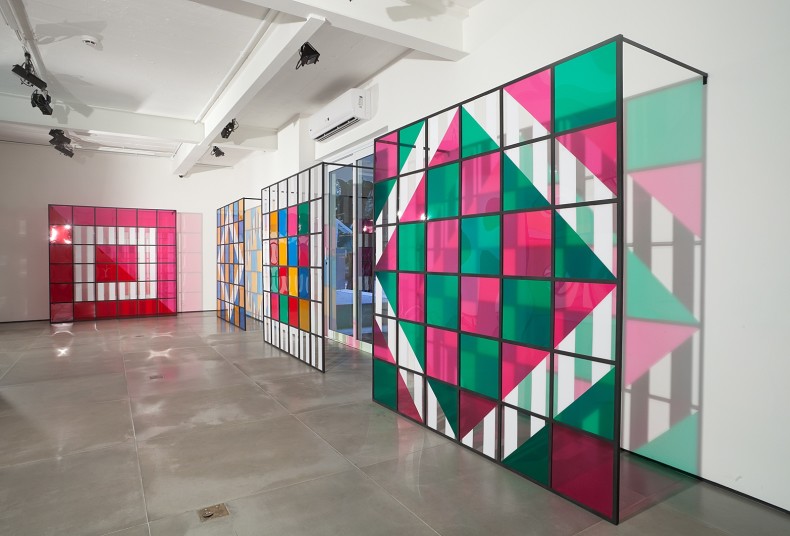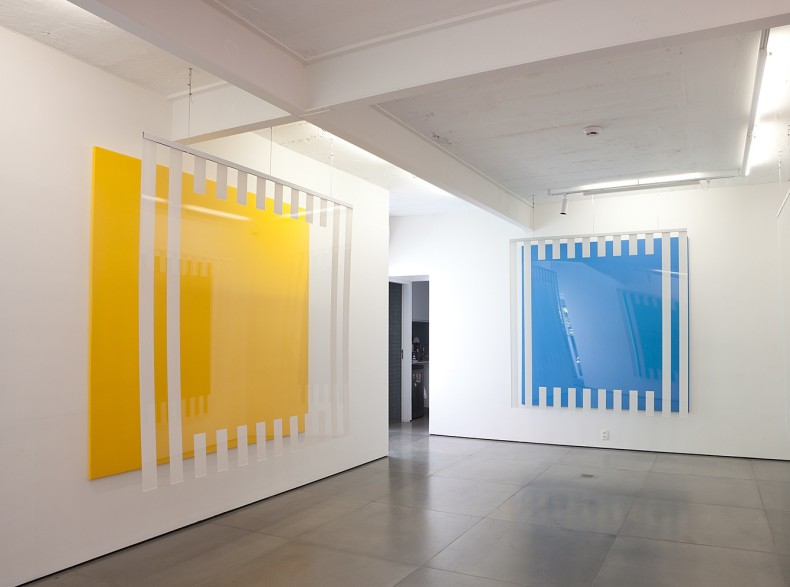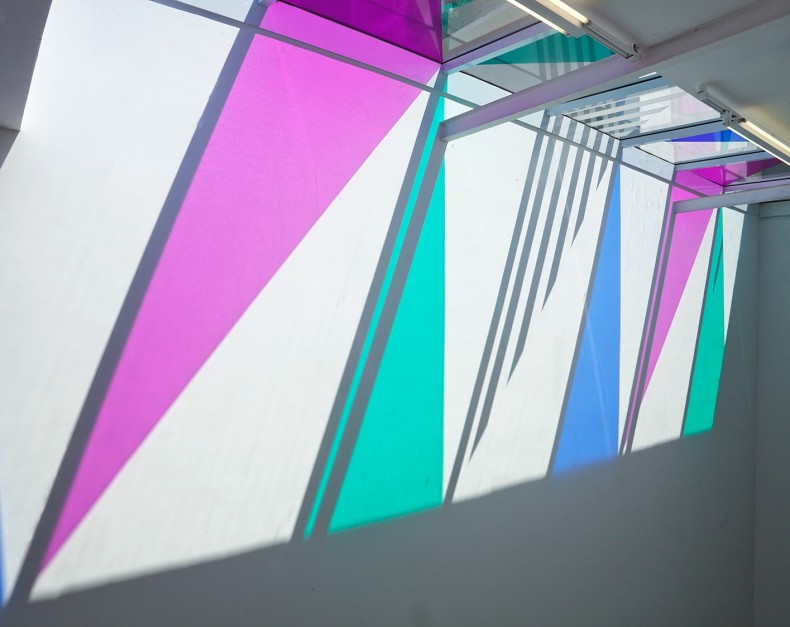Galeria Nara Roesler in Rio de Janeiro is proud to present a solo exhibition by France’s Daniel Buren. Known worldwide for his public interventions featuring his trademark white and colored stripes, the iconic conceptual artist has had his work shown occasionally in Brazil (at the São Paulo Art Biennial in 1983 and 1985 and at the Hélio Oiticica Municipal Art Center in 2001). After a 14-year span without an exhibit devoted entirely to his work, from 24.03 to 02.05 he will show interventions created especially for the gallery in Ipanema.
Daniel Buren graduated from École des Métiers d’Art in 1960 and abandoned painting in 1965 for a highly conceptual brand of art, based on the restrained use of elements outlined by alternately white and colored stripes. At first, the artist worked with off-the-shelf fabric, which underscored the objective character of his works.
Buren furthered his research by applying his staple white and colored stripes onto myriad materials, and then took to using them on the actual architecture of spaces. Ceilings with cornice, walls, columns, and other elements had their presence displaced or highlighted by the pattern.
Buren then started imprinting his trademark feature onto columns, a new development that spawned iconic installations such as the striped black-and-white columns that have adorned the courtyard of Paris’ Palais-Royal since 1986. The piece spurred debate on the implementation of contemporary artworks into historical buildings, such as the architect Ieoh Ming Pei’s Louvre Pyramid, completed three years after Buren’s own work.
Going into the new century, he delved deeper in his color research, broadening his scope of patterns and using different color stripes with no whites. Buren also started employing sets of mirrors and transparencies to allow the light to reflect and project color into environments, a case in point being the amazing installation he created for the Grand Palais in 2012. There, he added alternately blue and transparent glasses to the skylight, projecting a chessboard-like pattern onto the floor. Additionally, numerous colored glass discs set atop columns enabled audience members to pass underneath them, enhancing the color effects.
For Galeria Nara Roesler in Rio de Janeiro, besides creating a brand new installation along the lines of his latest pieces, Buren will likely take advantage of the hallway skylight to create his color-and-light games, whereby spectators watch as their commonplace perception gets altered into a new, playful order.
about the artist
Born on March 25, 1938 in Boulogne-Billancourt, France (where he still lives and works), Daniel Buren rose to prominence as a leading name in conceptual art in the 1960s-70s, and remains thus until this day. The holder of a degree from the École des Métiers d’Art, Daniel Buren had a short stint at École Nationale Supérieure des Beaux-Arts and started painting in the 1960s, before abandoning the art form to incorporate industrial patterns into interventions that interfere with how architecture is perceived. He then created his trademark white and color stripes built from decorative fabric. Lately, his inquiries have evolved into using light to produce macro-scale color effects, and mirrors to alter space through image refraction. His work is widely exhibited around the world, particularly so in the USA, Europe and Japan. Last year alone, his solo exhibits included “Buren: De un Patio a Otro: Laberinto,” at Hospicio Cabañas (Guadalajara, Mexico); “Daniel Buren. Lavori Luminosi,” at Galeria Massimo Minini (Brescia, Italy); “Daniel Buren. Comme un Jeu d’Enfant,” at the Musée d’Art Moderne et Contemporain (Strasbourg, France); "Daniel Buren. Catch as catch can: works in situ," at the Baltic Centre for Contemporary Art; among others.
